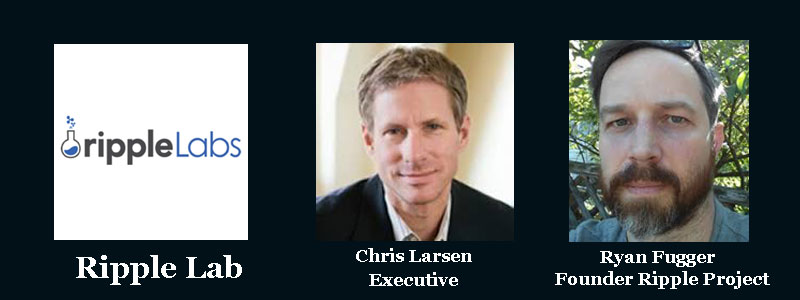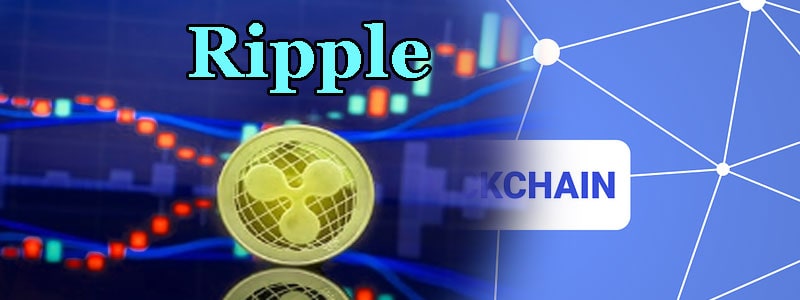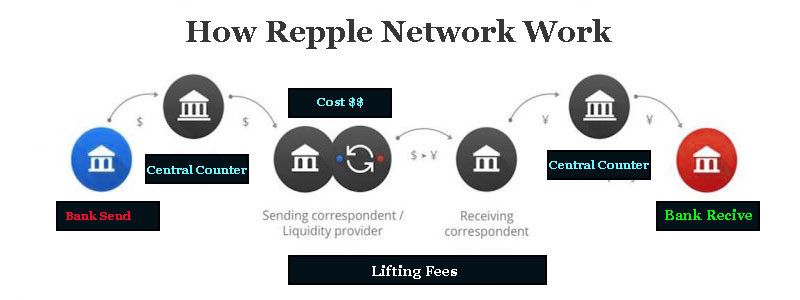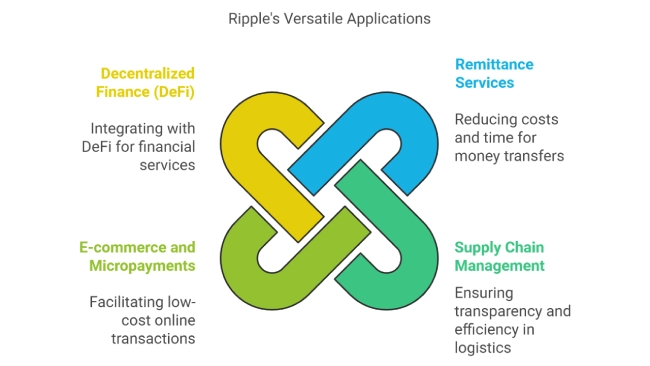Ripple and XRP have become key players in the cryptocurrency landscape, bridging the gap between traditional financial systems and blockchain technology. While Bitcoin introduced the world to digital currency, Ripple focuses on transforming how money moves across borders. XRP, Ripple’s native cryptocurrency, plays a vital role in enabling instant, low-cost, and efficient transactions, making it a favorite among banks and financial institutions.
Ripple is one of the most valuable cryptocurrencies within the high 5 cryptocurrencies. It was staying within the shadows of Bitcoin and Ethereum. It wasn’t talked about concerning the maximum amount. Although, it’s pretty different from most cryptocurrencies. With the recent massive surge in worth. Ripple is drawing all attention and is creating folks’ wonder. This is The Ultimate Ripple Beginners Guide.
In this section, I am going to share my knowledge of the Ripple beginners guide.
Table of Contents
Ultimate Ripple Beginners Guide
Ripple Overview
In this Ultimate Ripple beginners guide. You will know more about Ripple and its network system. The first and foremost elaborated clarification scan is their whitepaper. This guide isn’t supposed as an associate investment guide. Rather tell the readers about the project. The corporate behind the project and also the currency. If you’re new to cryptocurrencies, and you wish to catch up, you’ll scan our Bitcoin Guide or our elaborated Ethereum Guide. Ripple beginners guide.
What Is Ripple?
In 2012 Ripple was selected as a digital currency and created in an open network payment with XRP. The currency is specifically designed for money establishments and pay suppliers. Additionally, they are a profit-generating company and a venture-backed startup. The payment network is termed RippleNet, and it connects banks and alternative establishments through “gateways”. Additionally, permitting them to transfer cash and assets through the network. Ripple beginners guide
Payment suppliers
Payment suppliers provided by XRP and banks a reliable. On-demand supply of liquidity for cross-border payment. This permits monetary establishments to supply liquidity on demand. In real-time while not having to travel through foreign dealing fees. Ripple provides world monetary settlement solutions to ultimately change. The planet exchanges value like it already exchanges information– giving rise to the net of import (IoV).
Ripple is partnering with Banks around the world. To boost dealings prices and lay the inspiration for the net value. All is aimed towards transferring prices to businesses of all sizes: This Ripple beginners guide to explore all about it. Ripple beginners guide step by step.
Global and huge banks lower dealings and operational prices to extend billfold share
Small to mid-sized banks gain direct access to competitive liquidity to draw in new customers.
Third-party market manufacturers contend to produce liquidity for international payments.
People and businesses get pleasure from quicker and cheaper payment services with new visibility into a pursuit and delivery standing.
How Does Ripple Work?
Ripple is intended to assist and connect completely different payment systems. More importantly over seventy-five money establishments work with Ripple. Therefore, the Ledger is international and contains its own personal blockchain. As a result, banks and money establishments will use “gateways”. And be a part of the Ripple network known as RippleNet or Ripple Dealings Protocol (RTXP). Additionally, the network works with currency exchanges. Ripple beginners guide step by step.
XRP Ledger
A Gateways square measures the companies that link the XRP Ledger to the remainder of the planet. An existing online institution will expand and act as an entryway within the XRP Ledger. By doing this they gain many benefits and may use the ledger-related services as a replacement supply of revenue. Once a corporation joins the Ripple dealings protocol, they’ll exchange giant sums of cash with alternative “gateways” at a far quicker speed and with smaller prices. Ripple beginners guide
Currency
The Ripple currency may be an accessible digital quality. It is employed within the network for all transactions. In contrast to alternative cryptocurrencies, like Bitcoin. That aims to exchange traditional currencies, Ripple acts as a bridge between order currencies. They manage to try, therefore by operating with order currencies on quite ten online exchanges. Ripple beginners guide step by step.
Goal
The goal is to cut back the time and cash required for cross-border payment by employing a world currency. Also, produce and alter a worldwide network of monetary establishments. The exploitation of the Ripple network to lower all dealing prices. The larger image is to prevent all-cash establishments from proscribing income with fees. The process and exchange charges and to do for cash what the web has done to any or all alternative kinds of information. Step by step more about in this Ripple beginners guide article.
Transactions
All transactions occur and area units are recorded on the XRP Ledger. It is an associated ASCII text file suburbanized product that’s supported by a community of trusty validators. A team of regular engineers that actively develop and maintain the ledger. The time interval for transactions is merely four seconds. That could be a ton quicker than Bitcoin’s few-hour processes or Ethereum’s jiffy. Banks or alternative establishments systems take up to five days. Ripple beginners guide
The People Behind Ripple
Ripple’s leaders bring decades of expertise in technology, compliance, and monetary services. The chief operating officer is Brad Garlinghouse. He was President of shopper Applications at AOL. Ripple’s Board of Administrators lends its deep expertise to finance, policy, and laws.

Circulation
How many XRP tokens can there be? The corporation has created a hundred billion tokens. Just under four-hundredth square measure presently free to the public. It’s free to the market step by step at a rate of one billion per month. This ensures investors that the market won’t be overflown with tokens. Keeping the system healthy and preventing the value from plummeting.
Ripple is in central
Ripple is holding an hour of total circulation currently. It’s safe to mention that the system is a lot as centralized than different cryptocurrencies. So The reality is that Ripple may be a combination of centralized and localized. On its own, this is often big. Ripple’s chief operating officer thinks that the system is localized. As a result, XRP can still work even though Ripple disappears. Ripple discharged a decentralization strategy in 2017.
Buy And Hold Ripple
You can obtain Ripple at most standard exchanges. For storage, you’ll be able to use online case suppliers like GitHub or associate degree offline hardware cases. Online wallets bring risks so for future holders. So I would like to recommend the utilization of hardware wallets. They’re the foremost secure type of storage out there. As a result, they’re offline. An Example of this type of case is that of the Ledger Nano S. For a lot of data scans hardware wallets support Ripple. Ripple beginners guide. Ripple beginners guide
To buy Ripple you can check top cryptocurrency exchange
Beyond Banking: Ripple’s Expanding Use Cases
Ripple is often associated with cross-border payments between banks, but its technology has much broader applications across industries.
Use Cases to Highlight:
- Remittance Services:
- Explain how Ripple is reducing the cost and time of remittance transfers, making it a viable alternative for individuals in underserved financial markets.
- Example: Ripple’s partnerships with MoneyGram and other remittance services.
- Supply Chain Management:
- Discuss how Ripple’s blockchain technology can ensure transparency and efficiency in tracking goods and payments in complex supply chains.
- Example: Use of XRP Ledger for instant settlement of supply chain transactions.
- E-commerce and Micropayments:
- Highlight how XRP’s low transaction fees and fast settlement make it ideal for micropayments and online transactions.
- Decentralized Finance (DeFi):
- Explore the potential for Ripple to integrate with DeFi platforms, offering lending, borrowing, and staking services.
Navigating The Regulatory Landscape: The Ripple vs. SEC Lawsuit
The regulatory status of XRP is one of the most significant factors influencing its adoption and price. Ripple’s ongoing lawsuit with the U.S. Securities and Exchange Commission (SEC) has far-reaching implications. Ripple beginners guide
What to Include:
- Timeline of Events:
- December 2020: SEC alleges XRP is an unregistered security.
- Ripple’s defense and key milestones in the lawsuit.
- Current Status:
- Include updates on rulings or settlements.
- How the lawsuit has impacted Ripple’s operations and partnerships.
- Global Regulatory Challenges and Wins:
- Discuss how Ripple navigates regulatory environments in different countries. Highlight favorable regions like Japan and Switzerland.
- Implications for XRP Holders:
- Clarify how the lawsuit affects XRP investors, including potential outcomes.
Why It Matters:
Explaining the regulatory environment gives readers a realistic view of XRP’s risks and potential.
XRP vs. The Competition: A Comparative Analysis
A comparative analysis is invaluable for readers trying to understand XRP’s position in the crypto ecosystem.
Comparison Points:
- Transaction Speed:
- XRP: 3–5 seconds.
- Bitcoin: 10 minutes.
- Ethereum: 15 seconds (with varying gas fees).
- Cost:
- XRP: Average fee of $0.00001 per transaction.
- Bitcoin and Ethereum: Much higher fees, especially during network congestion.
- Scalability:
- XRP can handle 1,500 transactions per second (TPS), compared to Bitcoin’s 7 TPS and Ethereum’s 30 TPS.
- Energy Consumption:
- Highlight XRP’s energy efficiency versus Bitcoin’s massive carbon footprint.
- Use Cases:
- XRP’s focus on institutional payments vs. Bitcoin’s digital gold narrative and Ethereum’s smart contract dominance..
Ripple’s Role In The Future Of CBDCs
Central Bank Digital Currencies (CBDCs) are gaining momentum, and Ripple is positioning itself as a key enabler for these digital assets. Ripple beginners guide
What to Include:
- Ripple’s Partnerships with Central Banks:
- Bhutan: Ripple’s role in piloting Bhutan’s CBDC.
- Palau: Assisting in the development of a USD-backed stablecoin.
- Interoperability Solutions:
- Explain how RippleNet can connect CBDCs globally, ensuring seamless cross-border transactions.
- Advantages of Using Ripple’s Infrastructure:
- Security, scalability, and compliance with regulatory frameworks.
The Future Of Ripple And XRP: Predictions And Trends
Readers often look for forward-looking insights to understand the potential of a cryptocurrency.
What to Include:
- Ripple’s Vision for Global Finance:
- Discuss Ripple’s goal of becoming the backbone of global financial transactions.
- Emerging Trends:
- Tokenization of assets on the XRP Ledger.
- Ripple’s potential role in DeFi and Web3.
- Expert Predictions:
- Aggregate opinions from industry experts on XRP’s future price and adoption.
Frequently Asked Questions (FAQ)
1. What is Ripple, and how is it different from XRP?
Ripple is a company that provides blockchain-based payment solutions, primarily for financial institutions. XRP is the cryptocurrency used within Ripple’s ecosystem to facilitate transactions and provide liquidity.
2. How does Ripple’s consensus mechanism (RPCA) work?
Ripple uses the Ripple Protocol Consensus Algorithm (RPCA) instead of mining. Validators in the network reach consensus on transactions every few seconds, ensuring fast and energy-efficient settlements.
3. What are the main use cases for Ripple and XRP?
Ripple is mainly used for cross-border payments, but it also has applications in remittance services, supply chain management, and even decentralized finance (DeFi).
4. How is XRP different from Bitcoin and Ethereum?
XRP offers faster transaction speeds (3–5 seconds), lower fees, and greater scalability compared to Bitcoin and Ethereum. Unlike Bitcoin, XRP is not mined, making it more energy-efficient.
5. What is the Ripple vs. SEC lawsuit about?
The SEC alleges that Ripple sold XRP as an unregistered security. The outcome of this lawsuit could significantly impact Ripple’s operations and the broader crypto market.
6. Is XRP centralized or decentralized?
While Ripple has been criticized for centralization, the XRP Ledger is open-source and has a growing number of independent validators, making it increasingly decentralized.
7. What role does Ripple play in the development of CBDCs?
Ripple collaborates with central banks to pilot and develop Central Bank Digital Currencies (CBDCs). Its technology supports interoperability and scalability for global digital currencies.
8. What is the XRPL Foundation?
The XRPL Foundation is an independent organization dedicated to supporting the growth and adoption of the XRP Ledger through community engagement and funding development projects.
9. Can Ripple’s technology be used for non-financial applications?
Yes, Ripple’s blockchain can be applied to industries like supply chain management, digital identity verification, and even the tokenization of assets.
10. What is the future of Ripple and XRP?
Ripple aims to become a global leader in blockchain-based financial infrastructure. Trends like CBDCs, tokenization, and DeFi are likely to shape Ripple’s future.
Conclusion
Unlike most cryptocurrencies that don’t have any purpose or application. Simply have a restricted offer and high demand. Ripple may be a digital plus with a transparent purpose. Ripple’s goal is to assist money establishments to do their job quicker and cheaper. Some people see this as going against what cryptocurrencies indicate. It is a suburbanized system that bypasses the money establishments. The corporation created all coins and still holds a majority of the provision that makes the system somewhat centralized. Ripple beginners guide
We tried our best to give you deep information in this “The Ultimate Beginners Guide For Ripple- XRP”. Hope you enjoy this article. You can also read How To Make Money With Cryptocurrency and make some decent money. Stay with us, learn about the new crypto staff, and take your knowledge to the next level. Ripple beginners guide




